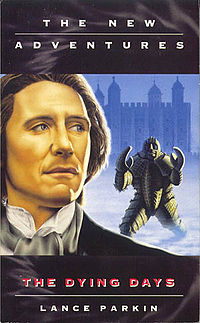With its launch of a year-long pilot program in B.C., Royal Bank of Canada (RBC) is upping the ante in the credit card customer loyalty game by providing selected Visa cardholders with instant rewards when they make purchases with their cards.
Powered by point-of-sale (POS) technology developed by Ernex Marketing Technologies, a Vancouver-based firm acquired by RBC last year (see “Royal Bank buys loyalty program provider,” Strategy DirectResponse, July 19, ‘99), the Royal Rewards program is said to be the first program of its type to be offered by a North American bank.
Selected Royal Bank Visa Gold Preferred and Platinum Preferred cardholders in Vancouver and the Lower Mainland of B.C. are eligible for enrolment in the Royal Rewards program, which debuted Sept. 1.
The program allows shoppers using RBC-issued Visa cards to get instant loyalty point status updates on their cash register receipts, and to redeem their points for instant rewards from participating merchants. For the first three months of the pilot project, cardholders can accelerate their points-earning capability by making repeat purchases with participating merchants. The program also incorporates a Swipe ‘n’ Win component (currently offering a grand prize trip to Hawaii) and custom-couponing capabilities.
The RBC program marks a departure from the standard approach of many retail-oriented loyalty marketing programs, which require customers to wait for their monthly statements to see their points status.
Marlene Thompson, vice-president, value-added programs at Toronto-based RBC, says the Royal Rewards program creates a win-win situation for both the bank and participating merchants because it builds loyalty among the bank’s cardholder base, while providing merchants with an effective tool to attract and retain customers.
“We always want to build loyalty for our products,” she says, adding that RBC had examined the possibility of implementing more traditional promotions – such as coupons – but decided it would be best to develop a loyalty program that would be simple and attractive for customers and merchants alike.
Vancouver was a logical location for the pilot, says Thompson, since it’s a sizable city and Ernex was already well-entrenched there – many of the 74 merchants participating in the pilot already have their own in-house loyalty programs powered by Ernex-enabled point-of-sale terminals.
“It really fit well for building Ernex business with Royal Bank business,” Thompson says.
The development of a new loyalty program for credit card holders can hardly be viewed as a response to declining credit card use, since, according to Visa Canada, there were 22 million active Visa cards in Canada in 1999, up 12.8% from the year before. However, there has been pressure from other fronts. Most notably, perhaps, U.S. MasterCard issuers MBNA and Capital One have both moved north in recent years, flooding the market with introductory offers of low interest rates.
“There’s a lot of competition and, in the last few years, it’s exploded in the Canadian marketplace,” says Thompson.
That may be so, but at least one analyst believes the threat from MBNA and Capital One is less serious than some might imagine.
Michael Szego, a retail industry consultant with Toronto-based J.C. Williams Group, says Canadians are smart consumers, and while many sign up for the cards to take advantage of the low introductory rates, lots of people are quick to dump them as soon as those rates go up.
He says that building long-term loyalty among cardholders, such as RBC is doing, is a much better strategy.
Szego says that, to date, no other Canadian credit card issuers are offering anything comparable to the Royal Rewards program.
“The key is the program’s real-time element,” he says. “Instant gratification is always better than deferred gratification.”
But it’s not just the structure of the Royal Rewards program itself that makes it stand out. Ernex technology also provides valuable consumer data that can be leveraged by Royal Bank and the participating merchants.
According to some of those participating in the trial, the Royal Rewards program has already created some new marketing opportunities. Superstar, a sporting goods retail chain with 25 outlets in B.C., says the program has provided the company an opportunity to broaden its reach beyond its core base of hardcore sporting fanatics.
According Joe Calvano, vice-president of Superstar, the Royal Rewards program is a great way to entice new customers and keep them coming back.
“Once they shop with us once,” he says, “they’ll continue to do so.”
Originally published in Strategy Magazine, October 9, 2000
 Doctor Who: The Dying Days
Doctor Who: The Dying Days